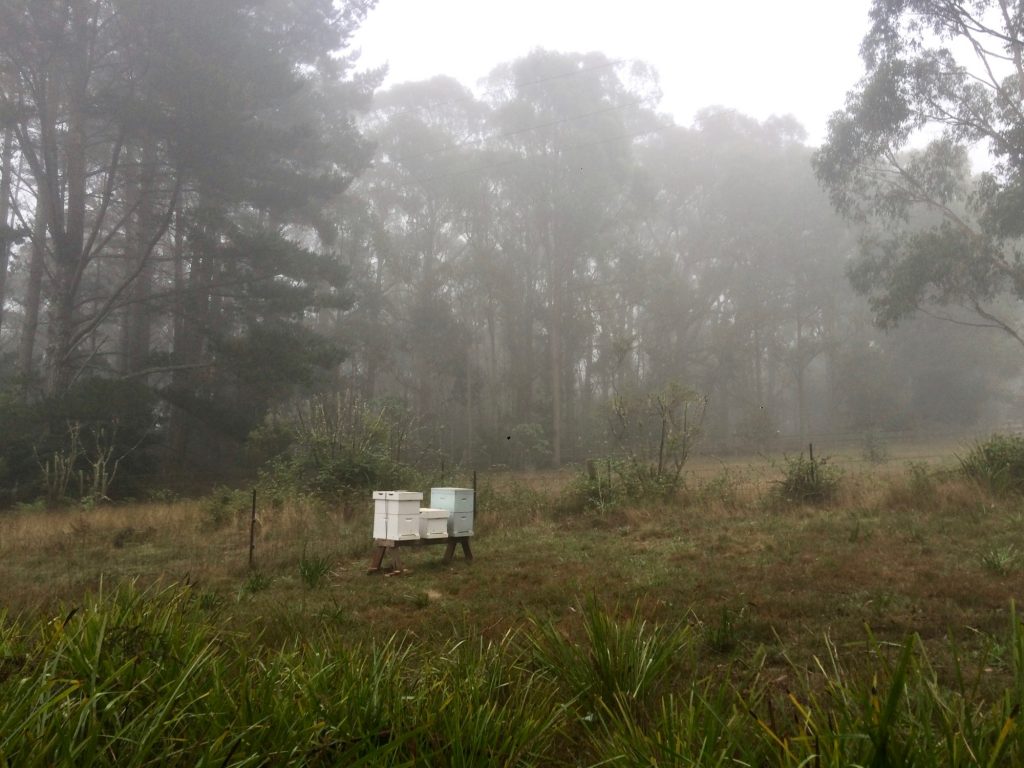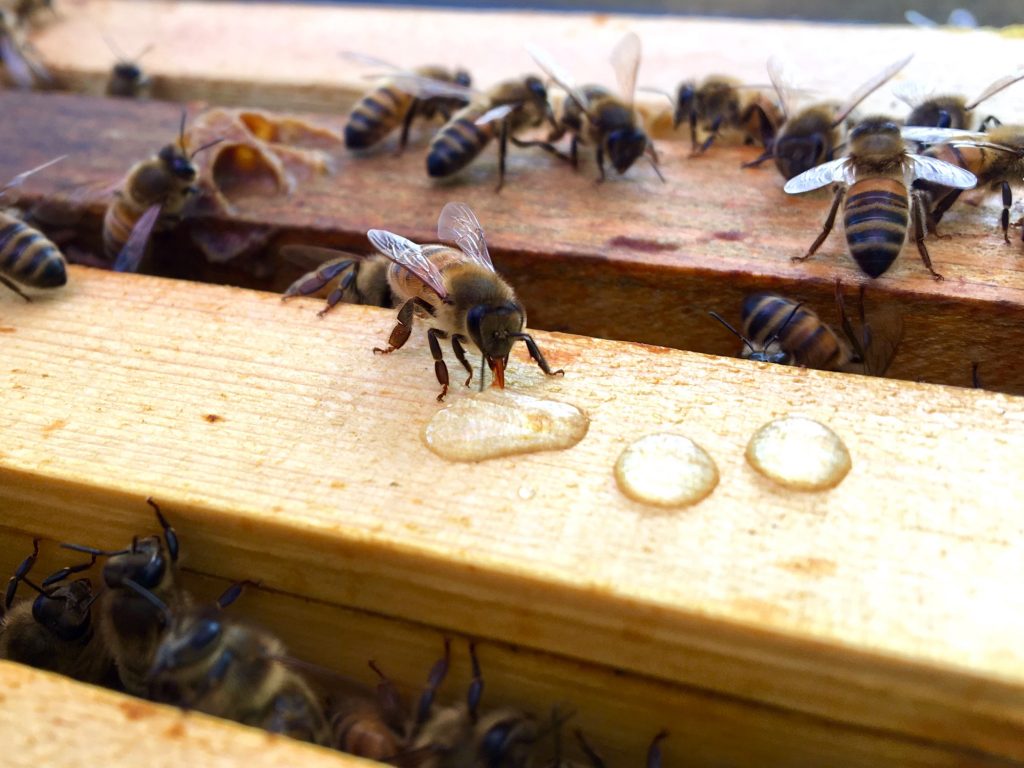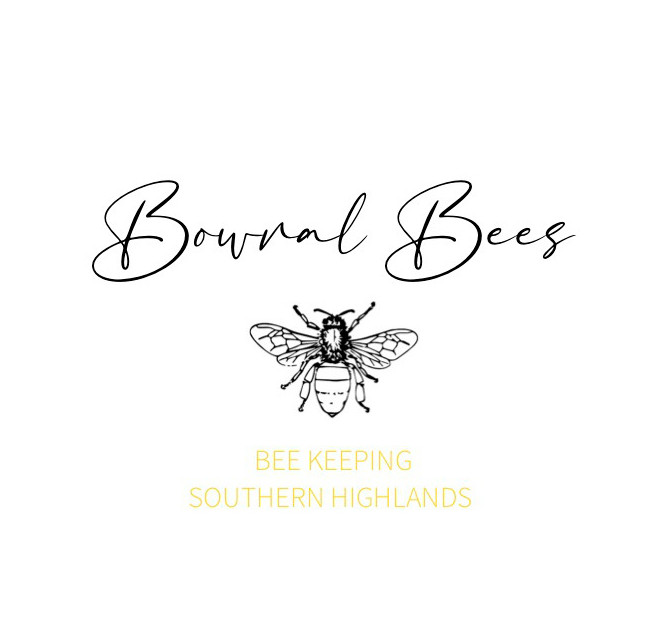Wintering Bees

We all know how cold it can get over Winter in the Southern Highlands so it pays to think ahead and prepare your bees for the chill!
Winter is hard for bees as there is often little or no food for them to forage. Thankfully they’re clever little things and they have evolved to be able to rely on stored honey to survive. But once the honey runs out, that’s it… it’s truly heartbreaking to open your hive in Spring and find they haven’t made it through.
So what can we do to help our bees get past the cold?!
Harvesting vs Leaving Honey
The cooler end of Autumn – so around mid April in the Highlands – is the last time you can expect to be able to open up your hive before it’s too cold to do so. This final inspection is the time to do a ‘pack down’ (see below) and make some decisions around how much honey your bees have and how much you will leave them vs take as harvest.
A late honey harvest is certainly possible and while it’s tempting to harvest a big haul of all that beautiful honey it must be carefully balanced with leaving your bees plenty of stores for winter. How much honey you leave is mainly dependent on the hive size and what stores they have.

The DPI recommends hives are packed down to 2 boxes and for a hive with strong numbers to leave a full super of honey = 8 frames if you use 8 frame boxes. These 8 frames could be in the super or in the brood box.
I prefer to remove the two outer frames of the brood box (which are usually a bit empty), and replace them with two half or full honey frames. Then I leave 4-5 full frames in the super with the remaining 2-3 frames only partly full as it gives the bees space for any late Autumn or Winter nectar flow.
For a weaker colony you could reduce down to just one box and in this case the DPI recommends leaving at least 3-4 frames of honey.
If you inspect your hive in late Autumn and think they have less than what is recommended you should consider feeding your bees before Winter (see more on feeding here) or during Winter as well.
So if it’s your first year bee keeping and your bees have built up from a nuc to a double hive with a full super, you could definitely harvest a couple of frames 🙂
For a triple box hive I would recommend packing down (see below) to a double hive and leaving 6-8 frames of honey in the super or brood box. This means your late Autumn harvest will be a full box so around 20-25kgs of honey, yum!
If in doubt it is certainly best to err on the side of caution and leave your bees more honey than less… because even a strong hive can starve over winter if they don’t have enough stores.
Packing Down
Packing down refers to reducing your box numbers in late Autumn so the bees have less space to keep warm. Just like our houses, if we have less room to heat up it uses less power, and less power for the bees means their honey stores last longer.
For example if you have a double box hive you could consider packing it down to a single box. This would be suitable for weaker double hives but for strong double hives you can simply leave them as they are.
If you have a triple box hive you should reduce it down to a double. Assuming you have two honey supers both with good quantities of honey you could harvest around half the frames and still leave 6-8 full frames for the bees.
When packing down you’ll need to choose which frames to keep in the hive or remove. Obviously you are best to remove any empty frames first then the frames with the least honey stored.
Any frames that you remove when packing down need to be carefully stored over Winter. The best practice is to freeze either empty frames or any frames you have harvested honey from (aka stickies) for at least 12 hours. Freezing the frames this way will kill any wax moth eggs.
You should then store frames in an air tight container to prevent any wax moth getting to them. Checking the stored frames every now and then is also a good idea.
At pack down time you can also decide whether to remove the queen excluder (assuming you have one). Removing the excluder prevents the queen from freezing if the majority of bees move up to the top box to keep warmer – she becomes stuck in the lower box 🙁 That said, I haven’t had issues with leaving a queen excluder on a double box over winter so removing it might be more relevant for colder climates than the Highlands.
Insulation?!
If you have ever lived in a house with poor insulation you’ll know how quickly heat is lost. You find you need to crank the heating up again…. and again… and again!

For our bees we can upgrade their ‘house’ by adding insulation either to the roof or even the around the outside of the hive. To do this I recommend using an inner cover with a layer of thick polystyrene insulation (eg Foilboard, or Expol) on top of the inner cover, then the normal hive lid on top of this. You could use an insulation batt or other options are wood shavings (helps absorb moisture), bubble wrap, or a quilt / material layer.
If you don’t have an inner cover you could fit a layer of insulation inside the lid itself and then cover this with something like plywood.
Wrapping the outside of a hive in insulation or a blanket of some sort would help reduce heat loss through the sides of the hive but I don’t believe it’s necessary in our climate.
Another tip for keeping the hive warm is to reduce the hive entrance. Less of a door space means less air flow into the hive so this results in less work for the bees to keep the hive warm. The DPI recommends reducing the entrance down to 50-75mm.
Along the same lines you should insert your base drawer or slider if you have a mesh base. Putting the drawer or slider in will help reduce air flow from the bottom of the hive.
To Feed or Not?

Feeding your bees over Winter is an extra safe guard to ensure they’ll have all the resources they need to survive.
Winter feeding should be dry feed = dry sugar or sugar ‘cakes’. You can dry feed on top of a hive mat or an inner cover, or inside a top feeder (you can remove the cap that usually prevents the bees getting inside the feeder).
If you have a Flow Hive then the hole in the inner cover can be used for allowing the bees access to a top feeder. You can see a video from Flow Hive on making a DIY feeder here (but this is for syrup so pre-Winter feeding).
Other Tips
Check your hive location: ideally your hive will be placed in a dry sunny location during winter. While it can be a little tricky moving a hive once it’s setup it might be worthwhile to shift them into the sun if they are in a shady location. The general rule when moving bees is either 1/2 a metre per day or over 3km
Take a quick peek: if you’re concerned about your bees over Winter on a warm day you could risk a quick peek in the hive. Don’t remove any frames to inspect as you risk chilling brood, but a quick look will show you how many bees are in the hive and very approximately how much honey is left (by looking down into the frames). Low bee numbers or low stores are not good so you should start feeding immediately.
